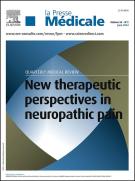Warm autoimmune hemolytic anemia: Advances in pathophysiology and treatment - 14/04/14
Summary |
Autoimmune hemolytic anemia due to warm antibodies (wAIHA) accounts for approximately 70% to 80% of all AIHAs in adults. The pathogenesis of wAIHA is a complex multistep process, the last step of which being the abnormal production of auto-antibodies directed towards red blood cells’ membrane antigens. The recent advances in the understanding of the underlying mechanisms leading to the breakdown of self-tolerance in wAIHA, mainly thanks to the study of animal models are discussed in this review. Treatment of wAIHA has long been empirical and mainly based on corticosteroids. In the last decade however, the efficacy of rituximab as second-line treatment has been demonstrated first in retrospective and more recently throughout prospective studies. Based on these advances, an algorithm for the management of primary adult's wAIHA is proposed in this review.
Le texte complet de cet article est disponible en PDF.Plan
Vol 43 - N° 4P2
P. e97-e104 - avril 2014 Retour au numéroBienvenue sur EM-consulte, la référence des professionnels de santé.


